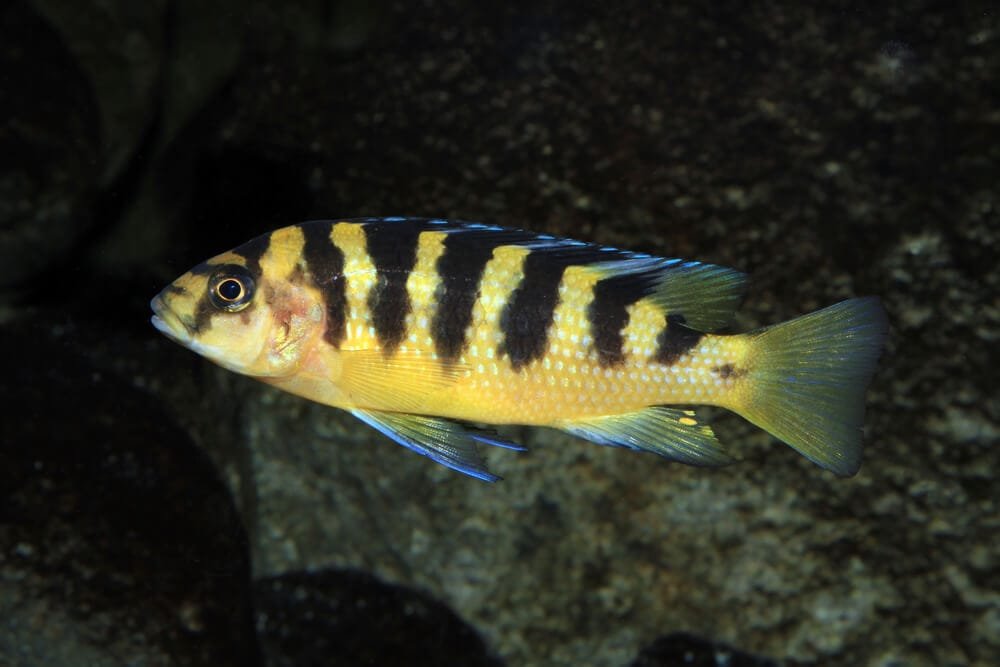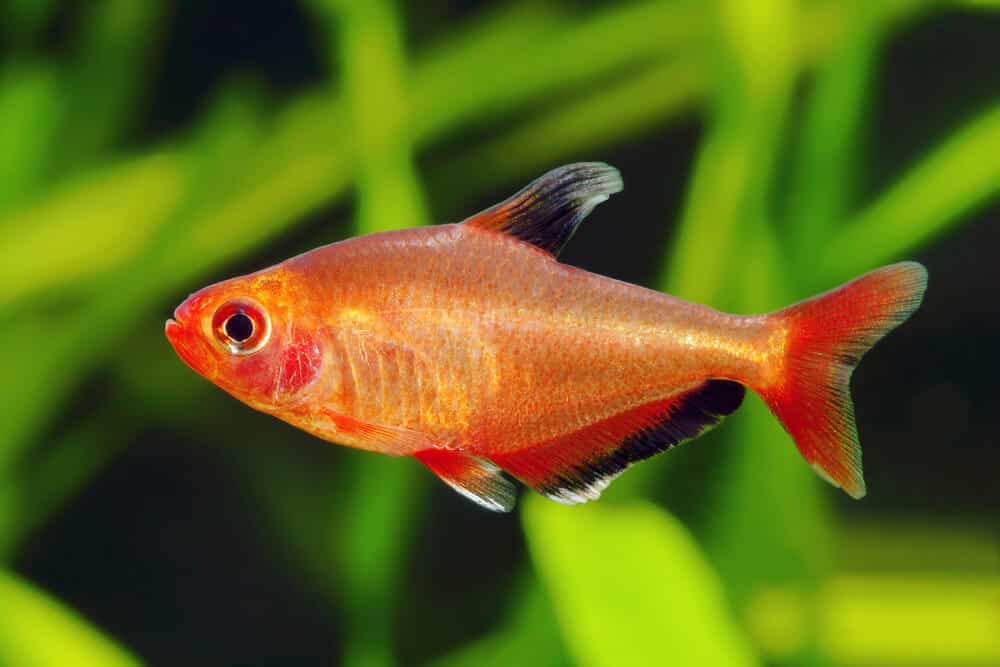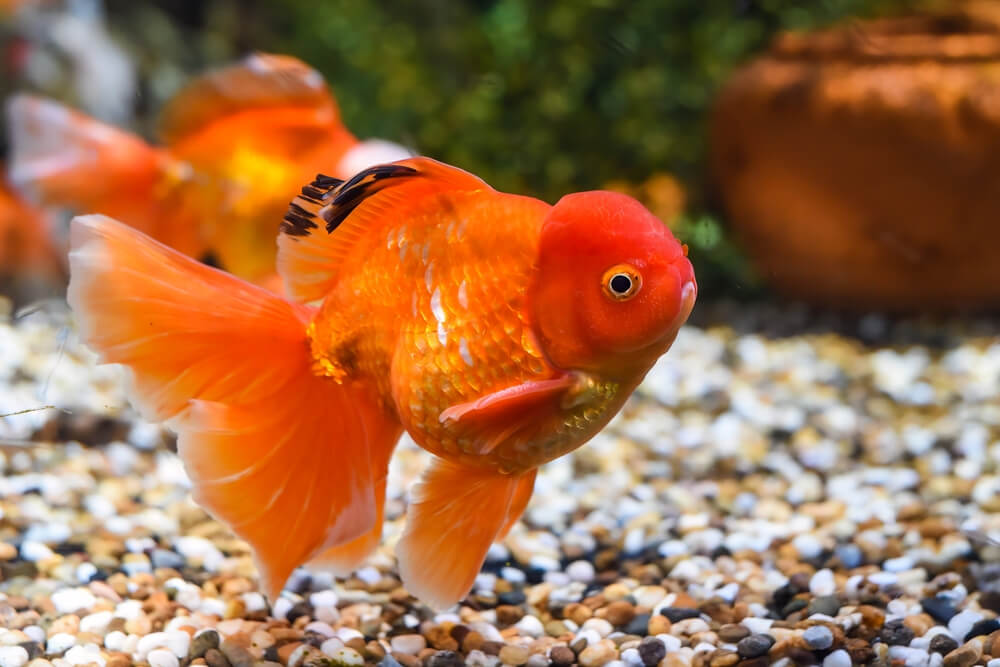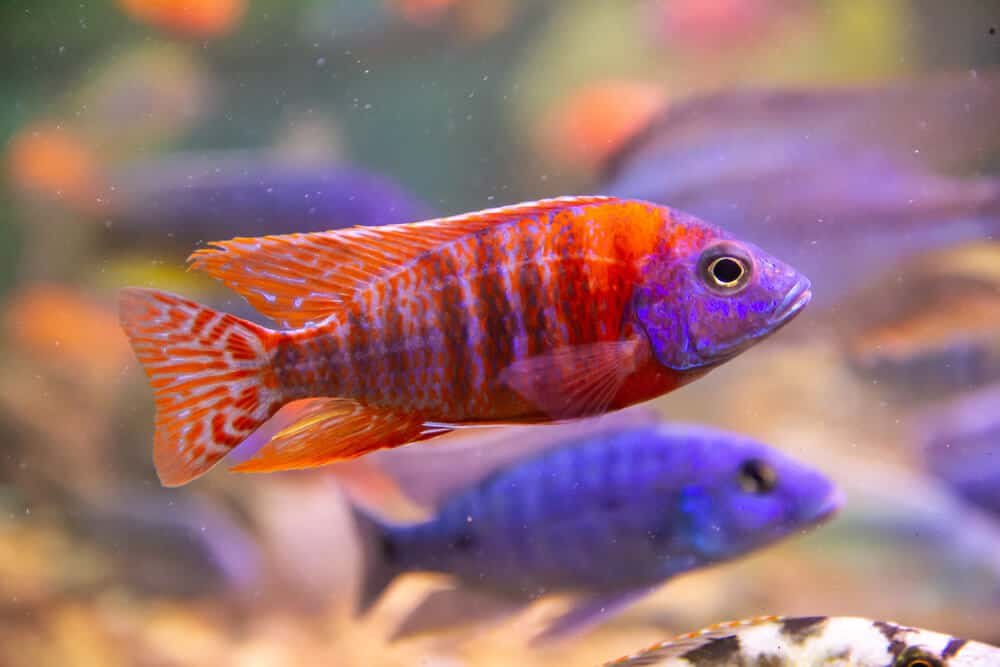Bumblebee Cichlid: Behavior, Tank Size and Suitable Tankmates

Meet the vibrant Bumblebee Cichlid, a fascinating fish known for its striking appearance and captivating behavior. With its bold black and yellow stripes resembling that of a bumblebee, this cichlid is sure to catch your eye. Native to the rivers and lakes of Africa, this species is known for its adaptability and resilience in various aquatic environments. Join us as we explore the unique characteristics and care requirements of the Bumblebee Cichlid, and discover why it has become a favorite among aquarium enthusiasts.
Physical Description
Coloration
The Bumblebee Cichlid is known for its vivid and striking coloration, which resembles the bold stripes of a bumblebee. Its body features alternating black and yellow bands, creating a visually appealing pattern. The intensity of the yellow hue may vary between individuals, with some displaying a more vibrant shade while others have a slightly duller color.
Size
When it comes to size, Bumblebee Cichlids are relatively small. They typically reach a maximum length of around 4 to 5 inches (10 to 13 centimeters) in captivity, making them well-suited for smaller aquariums. Despite their modest size, these fish have a robust and muscular build, giving them a sturdy appearance.
Distinctive Features
One of the Bumblebee Cichlid’s most distinctive features is its elongated dorsal and anal fins, which extend along a significant portion of its body. These fins are adorned with vertical striping that mirrors the pattern found on the fish’s body. Additionally, this species has a slightly pointed snout and sharp teeth for feeding on its prey.
Habitat and Distribution
Natural Habitat
Bumblebee Cichlids are native to the rocky shoreline areas of Lake Malawi in East Africa. In their natural habitat, they are commonly found among crevices and rocky outcrops, using these structures as hiding places and territorial markers. These cichlids prefer areas with ample vegetation and rocky substrates to create a suitable environment for nesting and establishing territories.
Geographical Distribution
As mentioned, Bumblebee Cichlids are endemic to Lake Malawi, which is one of the African Great Lakes. This lake stretches across three countries: Malawi, Mozambique, and Tanzania. Within this region, these cichlids can be found in various locations along the lake’s shoreline, particularly in the southern and central areas.
Behavior
Aggressiveness
Bumblebee Cichlids are known for their moderately aggressive behavior. In their natural habitat, they establish territories and defend them vigorously against intruders. When kept in a community aquarium, they may display aggression towards other fish, particularly those of a similar size or body shape. However, their territorial behavior can be managed by providing adequate hiding places and suitable tank mates (which will be discussed in the following sections).
Breeding Habits
These cichlids exhibit a polygamous mating system, with males courting multiple females. During breeding, males become more brightly colored and display intricate fin movements to attract females. Once pairs form, the female will lay and guard her eggs, while the male protects the surrounding territory.
Territorial Behavior
Territoriality is a significant aspect of Bumblebee Cichlid behavior. They defend their chosen territory against both conspecifics and other fish species. This territorial behavior is often displayed through aggressive posturing, chasing, and occasional physical altercations. Providing ample hiding places and dividing the aquarium into visually separated territories can help minimize conflicts and maintain a harmonious community.
Diet
Carnivorous Diet
Being true carnivores, Bumblebee Cichlids have a diet primarily composed of meaty foods. In their natural habitat, they feed on a variety of invertebrates, including small crustaceans, insects, and zooplankton. In captivity, they readily accept a diet of high-quality pellets, flakes, and frozen or live foods such as brine shrimp, bloodworms, and krill.
Feeding Patterns
Bumblebee Cichlids are diurnal feeders, meaning they are most active during the day when they search for food. It is best to feed them smaller portions multiple times a day rather than a large meal once. This feeding pattern mimics their natural behavior in the wild and helps ensure they receive proper nutrition without overeating.
Tank Requirements
Tank Size
When housing Bumblebee Cichlids, it is essential to provide them with adequate space. While they are not the largest cichlid species, they still require a tank of at least 30 gallons (113 liters) to thrive. Providing a larger tank is beneficial, as it allows for the establishment of territories and reduces aggression between tank mates.
Water Conditions
Maintaining optimal water conditions is crucial for the health and well-being of Bumblebee Cichlids. They prefer a temperature range of 75-80°F (24-27°C) and a pH level between 7.8 and 8.4. Additionally, these cichlids require clean and well-oxygenated water, so a reliable filtration system and regular water changes are essential.
Hiding Places
As naturally territorial fish, Bumblebee Cichlids greatly benefit from the presence of hiding places in their tank. Providing rock formations, caves, and driftwood creates secure retreats where they can establish their territories and seek refuge if needed. Additionally, these hiding places help reduce aggression by allowing fish to establish their boundaries and separate from potential conflicts.
Tank Mates
Suitable Tank Mates
When selecting tank mates for Bumblebee Cichlids, it is crucial to choose fish that can tolerate their moderately aggressive nature. Other cichlid species from Lake Malawi, such as the Rusty Cichlid or the Acei Cichlid, can be compatible tank mates. Additionally, bottom-dwelling species like catfish, such as the Synodontis multipunctatus or the Plecostomus, can work well in a community aquarium.
Incompatible Tank Mates
While some cichlid species may be suitable tank mates, others should be avoided due to their similar temperament and territorial behavior. Aggressive cichlids, such as the Red Devil Cichlid or the Jewel Cichlid, should not be housed with Bumblebee Cichlids as conflicts would likely arise. Smaller, more timid fish may also become targets for aggression, so caution should be exercised when selecting tank mates.
Popular Varieties
Electric Yellow Bumblebee Cichlid
The Electric Yellow Bumblebee Cichlid, also known as Labidochromis caeruleus, is a stunning variety of Bumblebee Cichlid with bright yellow coloration. It is highly sought after by aquarium enthusiasts due to its vibrant appearance, which adds a splash of color to any tank.
Red Fin Kadango Bumblebee Cichlid
The Red Fin Kadango Bumblebee Cichlid, or Copadichromis borleyi, is another popular variety of Bumblebee Cichlid. It features a striking combination of yellow and black bands on its body, with vibrant red fins that make it an eye-catching addition to any aquarium.
Care and Maintenance
Water Quality Management
To maintain proper water quality, regular monitoring of key parameters such as temperature, pH level, and ammonia and nitrite levels is necessary. Routine water changes should also be performed to remove accumulated waste and replenish essential minerals. Installing a quality filtration system and conducting regular maintenance will help ensure optimal water conditions for your Bumblebee Cichlids.
Feeding Schedule
Establishing a consistent feeding schedule is important for the health and well-being of your Bumblebee Cichlids. Feed them small portions 2-3 times a day, monitoring their intake to prevent overfeeding and subsequent health issues. Providing a varied diet that includes high-quality pellets, flakes, and occasional live or frozen foods will help meet their nutritional needs.
Tank Maintenance
Regular tank maintenance is essential for the overall health and longevity of your Bumblebee Cichlids. This includes performing water changes, cleaning the tank’s substrate, and monitoring the quality of the filter media. Regularly inspecting and maintaining the tank’s equipment, such as heaters and air pumps, will ensure they function optimally and promote a healthy environment for your fish.
Common Health Issues
Bloat
Bloat, also known as Malawi bloat, is a prevalent health issue in cichlids. It is characterized by the fish’s swollen abdomen, loss of appetite, and lethargy. Bloat is often caused by poor diet, overfeeding, or inadequate water quality. To prevent and treat this condition, offer a balanced diet, feed in moderation, and maintain pristine water conditions.
Ich
Ich, or Ichthyophthirius multifiliis, is a common parasitic infection that affects many freshwater fish, including Bumblebee Cichlids. Symptoms of ich include white spots resembling grains of salt on the fish’s body, increased scratching or flashing against objects, and respiratory distress. Immediate treatment with appropriate medications and improving water quality can help eliminate this parasite.
Skin Infections
Skin infections, often caused by bacteria or fungi, can occur when Bumblebee Cichlids are exposed to poor water conditions or physical injuries. These infections may manifest as open sores, raised lesions, or areas of abnormal discoloration on the fish’s body. Treating skin infections typically involves maintaining pristine water conditions, implementing appropriate medications, and ensuring optimal nutrition to support the fish’s immune system.
Breeding Bumblebee Cichlids
Setting up a Breeding Tank
To promote successful breeding, it is beneficial to set up a separate breeding tank for your Bumblebee Cichlids. The tank should provide ample swimming space, suitable hiding places, and appropriate water conditions. It is advisable to include rocky structures where the fish can establish territories, as well as flat surfaces for spawning.
Breeding Techniques
Bumblebee Cichlids are generally maternal mouthbrooders, meaning the females carry and protect the fertilized eggs in their mouths until hatching. To encourage breeding, condition the fish with high-quality nutrition and gradually raise the water temperature by a few degrees. Introducing a compatible male and female into the breeding tank can initiate courtship and eventually result in successful spawning.
Parental Care
Once the female Bumblebee Cichlid lays her eggs, she will gather them into her mouth, where they will hatch and develop. During this time, she will refrain from eating and focus solely on protecting her offspring. After the fry have hatched and are large enough to swim independently, the female will release them, and they can be transferred to a separate rearing tank, where they can grow under controlled conditions.
Conclusion
Bumblebee Cichlids are an enchanting species with their striking coloration and unique behaviors. By providing a suitable tank setup, compatible tank mates, proper nutrition, and regular maintenance, you can ensure their health and well-being. With the knowledge gained from this comprehensive guide, you are well-equipped to create a thriving aquarium home for these fascinating fish.






